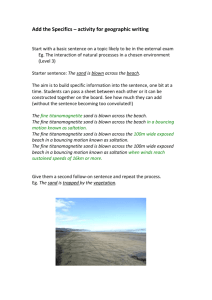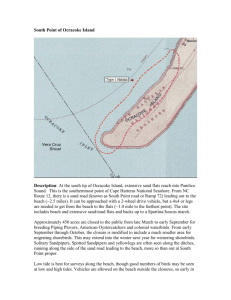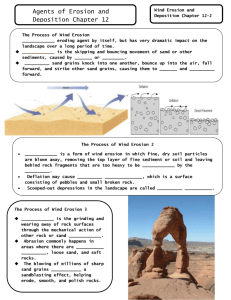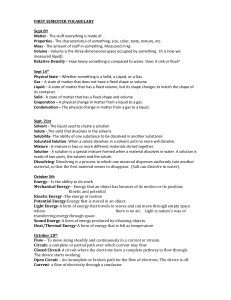Engaging Scenario
advertisement
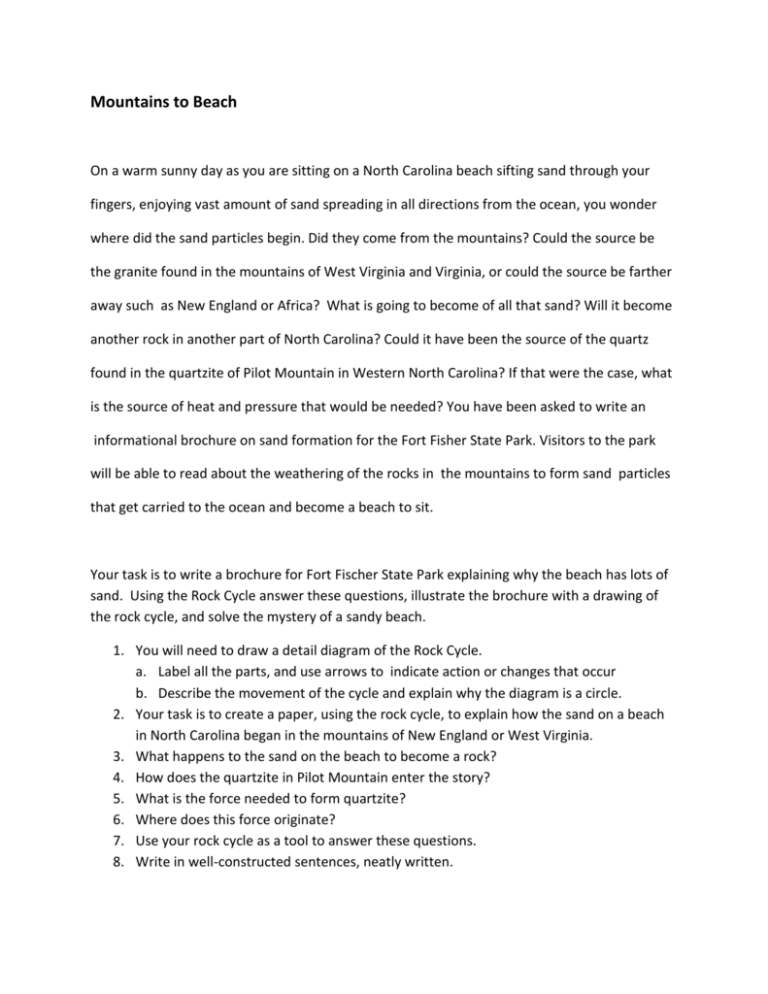
Mountains to Beach On a warm sunny day as you are sitting on a North Carolina beach sifting sand through your fingers, enjoying vast amount of sand spreading in all directions from the ocean, you wonder where did the sand particles begin. Did they come from the mountains? Could the source be the granite found in the mountains of West Virginia and Virginia, or could the source be farther away such as New England or Africa? What is going to become of all that sand? Will it become another rock in another part of North Carolina? Could it have been the source of the quartz found in the quartzite of Pilot Mountain in Western North Carolina? If that were the case, what is the source of heat and pressure that would be needed? You have been asked to write an informational brochure on sand formation for the Fort Fisher State Park. Visitors to the park will be able to read about the weathering of the rocks in the mountains to form sand particles that get carried to the ocean and become a beach to sit. Your task is to write a brochure for Fort Fischer State Park explaining why the beach has lots of sand. Using the Rock Cycle answer these questions, illustrate the brochure with a drawing of the rock cycle, and solve the mystery of a sandy beach. 1. You will need to draw a detail diagram of the Rock Cycle. a. Label all the parts, and use arrows to indicate action or changes that occur b. Describe the movement of the cycle and explain why the diagram is a circle. 2. Your task is to create a paper, using the rock cycle, to explain how the sand on a beach in North Carolina began in the mountains of New England or West Virginia. 3. What happens to the sand on the beach to become a rock? 4. How does the quartzite in Pilot Mountain enter the story? 5. What is the force needed to form quartzite? 6. Where does this force originate? 7. Use your rock cycle as a tool to answer these questions. 8. Write in well-constructed sentences, neatly written.








